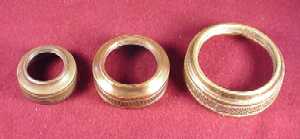Lamp collars are fastened onto the top of the oil fount. They are threaded and allow a burner to be attached to the lamp. They are generally made of brass, with the exception of some very early examples which were made of pewter. Collars can be plain, or decoratively embossed. Collars are generally "cemented" onto a flanged lip molded onto the fount. Some variations are pressed together or crimped onto the fount. American collars come in three basic sizes which are described below.
This shows collar sizes 1 through 3 for comparison. These collars would have been 'cemented' onto the fount using Plaster of Paris. 
Here is an example of a plain, double-ring collar. This is a #1. 
This is an example of the Miller Band Collar. This is a #2. 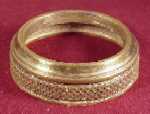
This shows an example of a Hatched Band Collar. This is a #3. 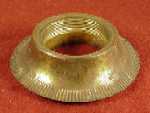
This is a Riverside Clinch Collar. It is held on by a brass sleeve that is crimped inside the fount. 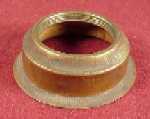
This is an example of the Ebling Collar. It is pressed onto the neck of the lamp and does not require 'cementing.' 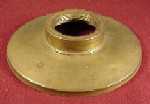
This is an example of a collar that is integrated into a cover for the top of the fount. This one is over 4 inches wide and is embossed around the top of the collar: PATENT AUG. 21-67 JUNE 17-78. These collars are often found on the founts of composite lamps. 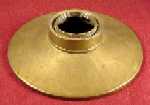
Another example like the one above. This one features a double-walled collar with four drain holes to allow spilled kerosene to drain back into the fount. They would also prevent pressure from building up in the fount. Adapters and Reducers Adapters and reducers were manufactured to allow unmatched burners and collars to be used together. An oversized burner could be used on a small collar, and vice-versa. 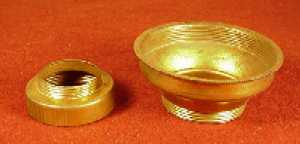
Here are two common reducers. The small one allows a #2 burner to be used on a #1 collar. The larger one allows a #3 burner to be used on a #2 collar. 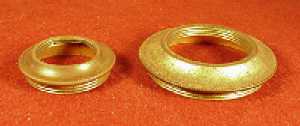
Here are two common adapters. The small one allows a #1 burner to be used on a #2 collar. The larger one allows a #2 burner to be used on a #3 collar. Lamp Filling Aids Lamp filling attachments were marketed to aid in the filling of the lamp without the need to remove the burner. This was especially useful for lamps that did not have a separate fill cap. 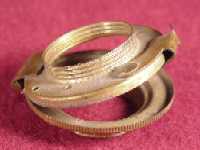
Here is a #1 Hinged Filler. This fit between the burner and the collar. A small hinged "lock" allowed the burner to be flipped up so that oil could be added to the fount without removing the burner from the lamp. 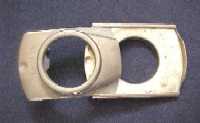
This is a #2 Sliding Filler. Operating on the same principle as the hinged filler, the burner was slid away from the collar to allow for filling the lamp. The top portion slides in a channel created in the lower part. It "locks" in place by a small dimple that can be seen on the left-hand side. This filler bears it's patent date. 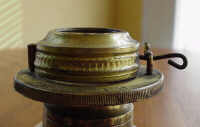
Here's an interesting filler that actually utilizes another collar that swings away on a pin. The gnurled base is embossed: G.B.N.DOW PAT. JAN. 7. 1890 Overall about 2 inches wide. To see another picture of this filler, click here. 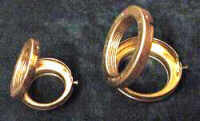
Pictured here is another style of hinged fillers in both the #1 and #2 sizes. These are similar to the hinged filler above, but the catch is released by a small push-pin. |
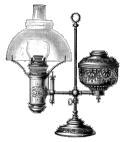
| Reference Desk | Lamp Information | Other Resources | On-Line Shopping |

Purveyors of Antique Lighting and Accessories
435 Main Street
 Hurleyville, New York 12747
Hurleyville, New York 12747
Oil Lamp Collars
^ Top of Page
Privacy Policy | Terms and Conditions of Use | Announcements
Copyright © 2001-2011 ~ Daniel Edminster | The Lampworks ~ All Rights Reserved
